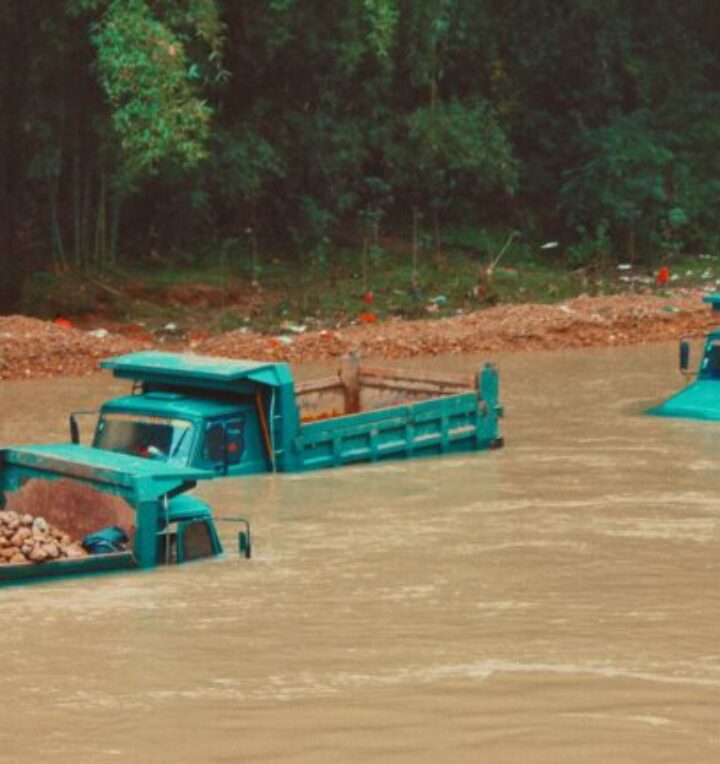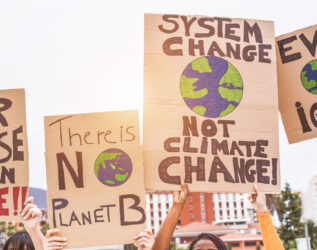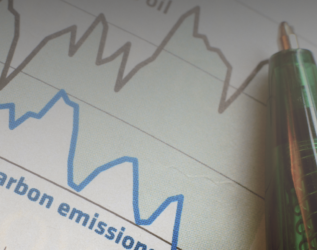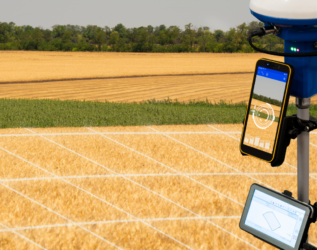IPCC’s latest report confirms it’s almost too late

We have hit the snooze button one too many times on the climate alarm. Each year new sombre statistics are revealed to us, and although we have begun waking up, with rising outrage from millions of young people and activists around the world, demand for change has still not been met to keep the world from reaching dangerous climate tipping points.
Earlier this year, The Intergovernmental Panel on Climate Change (IPCC) published its 6th assessment report of Working Group II. The report focuses on climate impacts, adaptation and vulnerability. The harrowing findings drew attention to irreversible impact caused by human-induced climate change, including the rise in weather and climate extremities, as natural and human systems exceed their limits in their abilities to adapt. Examples of these impacts include heat-related human mortality or areas burned by wildfires. It also highlighted global inequalities as a result of impacts to food production and water scarcity, which have hindered efforts to meet the SDGs.
Who is the IPCC?
The Intergovernmental Panel on Climate Change (IPCC) is made up of the world’s leading climate scientists from the United Nations and the World Meteorological Organization. They are responsible for advancing knowledge on human-induced climate change, publishing regular comprehensive updates intended to inform government policymaking.
The report’s key takeaways
Irreversible impact
- Predictable failure: We are unlikely to meet below 1.5C targets.
- Insufficient commitments: even after taking into account the low GHG scenario, global warming will continue to exceed records.
- Biodiversity loss: given the above trends, up to 1 in 2 species will face a very high risk of extinction.
The problem
We are at a point of no return. Even if we suddenly take all the necessary actions that are needed to correct the global warming path toward a 1.5°C future, climate change is still predicted to inflict unavoidable losses and damages. And yet, it could be worse. First, if we wait to take meaningful and rapid action, the more complex and cascading effects we will see across regions of the world. For example 3 to 14% of terrestrial species will likely face very high risk of extinction and there will be a 70-90% decline in coral reefs at global warming levels of 1.5°C. Second, if we take the wrong actions to avoid or reduce vulnerability to climate change, also known as maladaptation, we might create more problems than solutions. For example, fire suppression in naturally fire-adapted ecosystems, planting trees in naturally unforested land, or poorly implemented bioenergy, with or without carbon capture and storage, can lead to climate-related risks to biodiversity and water and food shortages, especially if deployed at a large scale.
What can we do?
Energy generation diversification, including with renewable energy resources and generation that can be decentralised depending on context (e.g., wind, solar, small scale hydroelectric) and demand side management (e.g. storage, and energy efficiency improvements) can reduce vulnerabilities to climate change, especially in rural populations. However, even if transport and buildings are aggressively electrified around the world and enough clean energy can be produced to power them all, there are likely to be residual emissions from activities that are more challenging to decarbonize, like farming, aviation, and chemical production. Carbon removal is therefore crucial to mitigate further climate change.
However this too comes with its challenges. Carbon removal is resource-intensive, requiring either land to grow trees and plants, or energy, water, and minerals to extract CO₂ from the air and pump it underground. Relying too heavily on it can risk straining those resources or disincentivize necessary decarbonization efforts. To combat this, consider ecosystem solutions that take all potential impacts into account and always prioritise decarbonization over carbon removal.
Industry examples
Running Tide builds technologies that sustainably scale the natural processes of the ocean. Running Tide puts carbon back where it belongs by growing biomass and sinking it in the deep ocean.
Another company making significant gains in carbon removal is Charm Industrial. They convert biomass into a stable, carbon-rich liquid and then pump it deep underground. This removes CO₂ permanently from the atmosphere, out of reach of wildfires, soil erosion and political folly. This is much more durable than other projects which often rely on storing carbon in trees and soils, which could easily send CO₂ back into the atmosphere in a wildfire blaze or an outbreak of disease.
Inequalities
- Perverse thirst: Half the world’s population suffers severe water shortages.
- Lethal heat: One in three people are exposed to deadly heat stress.
- Mass hunger:183 million more people are projected to go hungry by 2050 – this is almost the size of the entire population of Brazil!
The problem
Inequalities exacerbated by the effect of climate change will affect almost half of the entire human population. However, we cannot look at climate change in isolation. It is the intersection and interplay of climate change and “socio-economic development, unsustainable ocean and land use, inequity, marginalization, historical and ongoing patterns of inequity such as colonialism, and governance” that is creating current and future human vulnerabilities. These will be most salient where governments, civil society and the private sector are least resilient and capable of providing basic services and infrastructure.
What can we do?
These findings highlight the fundamental roles of education, justice and governance in ensuring inclusive climate adaptation. As the IPCC report puts forward, “Inclusive governance contributes to more effective and enduring adaptation outcomes and enables climate resilient development.”
On the education front, climate literacy is also needed at all levels. Limited availability of information and data issues pose further constraints to adaptation planning and implementation. Climate knowledge and sharing can (1) increase awareness among climate skeptics, (2) change risk perceptions of the effects of climate change, especially for those who perceive they have less to lose, and (3) influence climate-positive behaviors on a daily basis. Climate education is not just a government responsibility. Many companies can influence behaviors, for example when Googling flights, you are informed of the CO₂ emissions. Some fashion websites tell you which items are more sustainable. Think about how your company can influence behavior.
Industry examples
When it comes to education, we can take inspiration from companies like Labster, whose platform for virtual labs and interactive science offers earth studies and other subjects that enhance climate knowledge, whilst making education more accessible to students around the world.
Tomorrow Bank is influencing climate positive behavior through financial services. On their app, it has a benefits feature that incentivizes users to take green actions such as purchasing energy from a clean energy provider.
Opportunities for impact investing
We need to start funding both climate mitigation and climate adaptation. The good news is that adaptation initiatives have seen progress over the last 6 years. The bad news is that adaptation only considers immediate climate risks and deployed technologies are smaller in scale and fragmented.
Some climate responses that can have substantial contribution to climate change mitigation and adaptation and that entrepreneurs should draw their attention to are vertical farming, alternative proteins, sustainable forest management, decentralized renewable energy and energy demand management. Investors need to focus their attention on funding and partnering with the next impact unicorns in such sectors.Although the IPCC report makes a distressing read, the main takeaway is it’s not too late, but it’s almost too late. Read the full report here.











